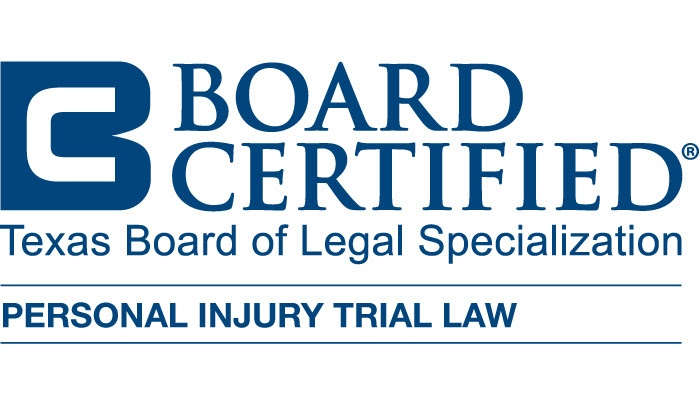Drowning incidents in Texas are tragic and can lead to devastating consequences for victims and their families. Understanding the compensation available in these cases is essential for those seeking justice and financial recovery. In Texas, compensation for drowning cases can encompass a range of damages, each designed to address different aspects of the loss suffered. This comprehensive examination will explore the various types of damages available, the legal principles guiding these claims, and the steps involved in pursuing compensation.


Types of Damages in Texas Drowning Cases
When a drowning occurs due to negligence or wrongful conduct, victims or their families can pursue several types of damages. These damages fall into two primary categories: economic and non-economic. Economic damages are tangible financial losses, while non-economic damages address more subjective, non-monetary impacts.
Economic damages include medical expenses, lost wages, and funeral costs. Medical expenses cover the costs of emergency care, hospitalization, and ongoing treatment related to the drowning incident. Lost wages compensate for the income the victim would have earned had the incident not occurred. In the tragic event of a fatal drowning, funeral costs and burial expenses are also recoverable.
Non-economic damages encompass pain and suffering, emotional distress, and loss of consortium. Pain and suffering damages compensate for the physical pain and discomfort endured by the victim. Emotional distress addresses the psychological impact on both the victim and their family. Loss of consortium refers to the deprivation of the benefits of a familial relationship, including companionship, affection, and support.
My focus is to give a voice to families who have suffered a wrongful death or a serious injury to a family member caused by an 18-Wheeler, commercial truck, or a drunk driver. Contact us today, we can help you.Helping Injury Victims for Over 25 Years
Wrongful Death Claims and Survival Actions
In cases where a drowning results in death, two distinct legal actions can be pursued: wrongful death claims and survival actions. Each serves a unique purpose and provides different types of compensation.
A wrongful death claim is brought by the surviving family members of the deceased. This claim seeks compensation for the losses suffered by the family due to the death of their loved one. Damages in a wrongful death claim can include loss of financial support, loss of companionship, and mental anguish. The aim is to alleviate the financial and emotional burden placed on the family by the untimely death.
A survival action, on the other hand, is brought on behalf of the deceased’s estate. This action seeks to recover damages that the deceased could have claimed had they survived. These damages can include the pain and suffering endured by the deceased prior to death, medical expenses incurred, and lost earnings. The compensation awarded in a survival action becomes part of the deceased’s estate and is distributed according to their will or state intestacy laws.
Determining Liability in Drowning Cases
Establishing liability is a critical aspect of any drowning case. Liability determines who is legally responsible for the incident and therefore obligated to compensate the victim or their family. In Texas, several parties can potentially be held liable in drowning cases, depending on the circumstances.
Property owners have a legal duty to maintain a safe environment, including ensuring that swimming pools and other bodies of water are safe and adequately supervised. If a drowning occurs due to the property owner’s negligence, such as failing to provide proper safety measures or warnings, they can be held liable.
Manufacturers of swimming pool equipment and safety devices can also be liable if their products are found to be defective or inherently dangerous. This can include faulty pool gates, inadequate pool alarms, or malfunctioning pool covers.
In cases involving public swimming areas, municipalities or government entities may be held accountable if they failed to provide adequate safety measures or supervision. Lifeguards and other staff responsible for monitoring swimming areas can also be implicated if they are found to have been negligent in their duties.
The Role of Negligence in Drowning Cases
Negligence plays a central role in many drowning cases. To establish negligence, the plaintiff must demonstrate that the defendant owed a duty of care, breached that duty, and caused the drowning incident as a result. Duty of care refers to the legal obligation to act in a manner that avoids harm to others.
For instance, a property owner has a duty to ensure that their swimming pool is safe and secure, including installing proper fencing and safety equipment. If they fail to do so, and a drowning occurs as a result, they have breached their duty of care.
Causation is another critical element. The plaintiff must prove that the defendant’s breach of duty directly caused the drowning. This requires demonstrating a clear link between the defendant’s actions (or lack thereof) and the incident. In some cases, this can be straightforward, such as when a pool gate is left unlocked, and a child gains access to the pool. In other cases, it may require more complex legal and factual analysis.
Comparative Fault and Its Impact on Compensation
Texas follows the doctrine of comparative fault, which can influence the amount of compensation awarded in drowning cases. Comparative fault, also known as proportionate responsibility, allocates fault among all parties involved, including the plaintiff. If the plaintiff is found to be partially at fault for the drowning, their compensation will be reduced by their percentage of fault.
For example, if a court determines that the plaintiff was 30 percent at fault for not supervising a child who drowned in a neighbor’s pool, and the total damages are assessed at $1 million, the plaintiff’s compensation would be reduced by 30 percent, resulting in an award of $700,000.
However, if the plaintiff is found to be more than 50 percent at fault, they may be barred from recovering any compensation. This principle underscores the importance of thoroughly investigating and presenting evidence to minimize the plaintiff’s degree of fault and maximize the potential recovery.
Related Videos
Choosing a Personal Injury Attorney
Types of Compensation in a Truck Accident Claim
Statute of Limitations in Texas Drowning Cases
The statute of limitations is a legal deadline for filing a lawsuit. In Texas, the statute of limitations for personal injury and wrongful death claims, including drowning cases, is generally two years from the date of the incident. Failing to file a claim within this period can result in the loss of the right to seek compensation.
There are exceptions to this general rule. For example, if the victim is a minor, the statute of limitations may be tolled (paused) until the minor reaches the age of 18. Additionally, in cases involving government entities, special notice requirements and shorter deadlines may apply.
It is crucial for victims and their families to be aware of these time limits and seek legal advice promptly to ensure their claims are filed within the appropriate timeframe. Missing the statute of limitations can be a significant barrier to obtaining the compensation needed for recovery and justice.
The Legal Process of Pursuing Compensation
Pursuing compensation in a drowning case involves several key steps, each requiring careful attention and experience. The process typically begins with an investigation to gather evidence and establish the facts surrounding the incident. This can include obtaining police reports, witness statements, medical records, and testimony.
Once sufficient evidence is gathered, the next step is to file a lawsuit. This involves drafting and submitting a complaint to the appropriate court, outlining the allegations and the damages sought. The defendant will then have an opportunity to respond, either by admitting or denying the claims, and the case will proceed to the discovery phase.
Discovery is the process by which both parties exchange information and evidence related to the case. This can include depositions, interrogatories, and requests for documents. Discovery allows each side to build their case and prepare for trial.
In many cases, the parties may engage in settlement negotiations to resolve the matter without going to trial. Settlement can provide a faster and less costly resolution, though it requires careful negotiation to ensure the compensation offered is fair and adequate.
If a settlement cannot be reached, the case will proceed to trial. During the trial, both parties will present their evidence and arguments to a judge or jury, who will then determine liability and the amount of compensation to be awarded.
The Importance of Legal Representation
Navigating the complexities of drowning cases and securing fair compensation requires legal representation. An experienced attorney can provide invaluable assistance at every stage of the process, from investigation and evidence gathering to negotiation and trial.
A knowledgeable attorney understands the intricacies of Texas law and can effectively advocate for the victim’s or family’s rights. They can help establish liability, present compelling evidence, and counter any defenses raised by the opposing party.
Moreover, an attorney can handle the legal and procedural aspects of the case, allowing the victim or family to focus on their recovery and healing. They can also negotiate with insurance companies and other parties to ensure the compensation offered is just and sufficient to cover all damages.
Fighting for the Compensation and Justice You Deserve
If you or a loved one has been affected by a drowning incident in Texas, seeking legal assistance is crucial to understanding your rights and pursuing the compensation you deserve. The dedicated team at Willumsen Law Firm, P.C. is here to help. With extensive experience in handling drowning cases, we are committed to providing compassionate and effective representation.
Our attorneys will work tirelessly to investigate your case, gather the necessary evidence, and advocate for your best interests. We understand the emotional and financial toll a drowning incident can take, and we are here to support you every step of the way.
Contact Willumsen Law Firm, P.C. today for a free consultation to discuss your case and learn how we can assist you in seeking justice and fair compensation. Your journey to recovery starts here.



